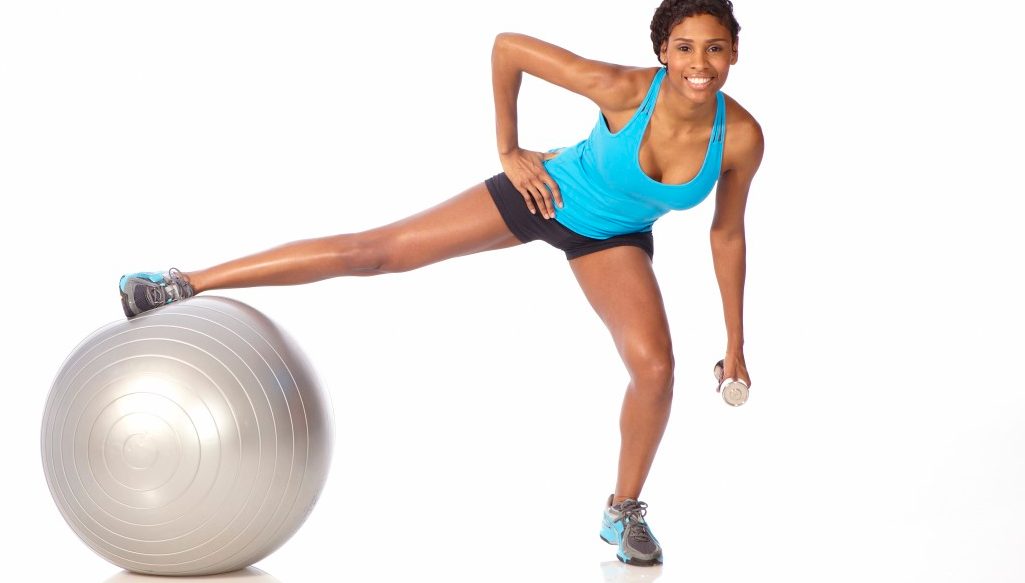Raise the Bar with the Barre Workout

While it’s challenging, the Barre Workout focuses on small movements that have the potential to deliver big fitness results. Here’s what you can do.
Named after the main piece of equipment used in this exercise program — a ballet bar — Barre workouts combine elements of ballet, Pilates, and yoga. You’ll also often use light weights, exercise bands, a small ball or rubber hoop, and a mat. Growing in popularity, Barre workouts have attracted close to 3.7 million people in the United States in recent years.
The Barre approach is a low-impact, complete body workout that typically lasts 55 minutes to an hour. It is choreographed to upbeat music that helps keep you motivated.
You’ll usually start with a warmup and some light upper body and core conditioning, progressing to moves that focus on your thighs and hamstrings, then your glutes, and finishing with abdominal work.
Many routines follow each segment with stretching. You’ll focus on the muscles that you were working a minute earlier, which helps lengthen them. Some workouts include cardio, but, unless you’re already super fit, just keeping up with the muscle moves is likely to get your heart rate up.
YOU MIGHT ALSO LIKE: Morning Exercise Boosts Weight Loss
What are isometric exercises?
No matter which barre studio you pick, the routines primarily use isometric exercises to achieve their effect.
Muscles can contract in three ways.
- In an isometric contraction, the muscle tenses without changing length. If you lean forward with your hands on a wall and push as hard as you can, you’re using the isometric approach. Isometric contractions occur whenever you feel the muscles in your arms, shoulders, abdomen, and legs tense as you push. These exercises help keep muscles strong but don’t make muscles get bigger, which appeals to many women.
- Other ways of using muscles change their length. Consider a bicep curl. When you raise the weight, your muscle tenses and gets shorter. This is called a concentric contraction.
- If you lower the weight while resisting, your muscle will tense while it’s lengthening. This is an eccentric contraction.
In a barre class, you aren’t completely motionless, but the movements are ideally only about one or two inches, which keeps the contractions isometric.
The barre is approachable, but it isn’t easy
Because the routines are low-impact and can be modified in a variety of ways, Barre classes are appropriate for virtually any age or fitness level, and there are special modifications for women who are pregnant. Make sure you talk to your doctor before starting this, or any, exercise program.
If you’ve been inactive or haven’t incorporated much strength training into your exercise routine, you’ll likely find the classes quite challenging. You may find that you can’t hold the pose for the entire time and need to rest for a few beats, then pop back into the pose.
That is common. If you stick with it, you’ll find you will be able to hold poses for longer. You’ll feel quite a sense of achievement when you complete your first class without coming out of any of the poses.
It may also take you a while to get the hang of the poses. You need to make many little adjustments to your body alignment to get the optimum effect. But classes are usually small, and instructors are very hands-on, generally moving around the room to adjust students into the right positions.
Another phenomenon common with this type of exercise is shaking. This indicates the muscle being worked is reaching total fatigue, which is the goal.
“Embrace the shake,” is often heard in these classes, but it can feel strange and be a bit disconcerting. No need to feel self-conscious about shaking — everyone in the room has been there.
Also, be aware that you will likely be sore after your first couple of classes because you’ll be using your muscles in new ways. That’s one way you’ll know it’s working.
Because it’s low impact, there’s very little risk of injury from a barre workout. In fact, isometric exercise has been shown to be an effective method of recovery for some injuries.
Get cardio, too
Some studios add cardio to Barre workouts. But you’ll probably still need to get some cardio separately. Even if you’re making it to a class three or four times a week — the amount recommended for maximum effectiveness — consider devoting your exercise time two days a week to a run, brisk walk, tennis match, or workout on a treadmill or elliptical.
How quickly you start to see results depends on your starting level of fitness and, of course, how often you go to class. Don’t wait too long in between your initial few classes. If you hang in there, you’ll likely see results in just a few weeks.
Here are some Barre inspired exercises you can do anywhere.
Updated:
November 22, 2022
Reviewed By:
Janet O’Dell, RN